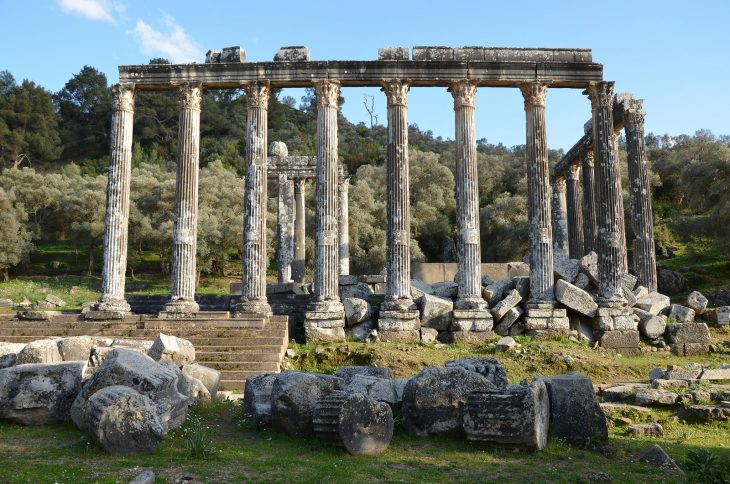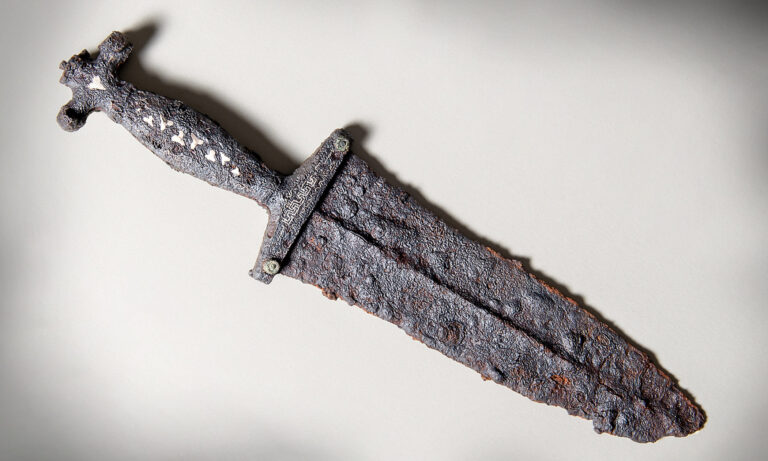Sometimes experts can get it wrong. And that is what seems to have happened in the case of a Swiss Roman battle site from 2000 years ago. The new site was found between the towns of Tiefencastel and the Cunter thanks to the persistence of an amateur archaeologist. Using a metal detector, Lucas Schmid, who is a volunteer at the Graubünden Archaeological Service, found a Roman dagger in the remote south-eastern region of Switzerland near the Crap-Ses gorge, which was a solid piece of evidence for what was until then an unknown Swiss Roman battle.

Using a metal detector, Lucas Schmid, a hobby archaeologist, found a Roman dagger in the south-eastern region of Switzerland, which was a solid piece of evidence for what was an unknown Swiss Roman battle. ( Schweizer Radio und Fernsehen )
The Swiss Roman Battle Site: Revealed Artifacts for 20 Years
Although the site became known 20 years back and yielded many artifacts at the time, it was believed to have surrendered all its treasures over the years. However, local amateur archaeologist Lucas Schmid believed otherwise.
His tenacity paid off when, two years ago, he managed to uncover the well-preserved 2000-year-old Roman dagger . This alerted experts to the possibility that there were more artifacts at the site to uncover. The University of Basel then began a five-year research project with the federal government and the canton.

Swissinfo.ch reports that over the last two years archaeologists have found a rich haul of hundreds of artifacts including the dagger, well-preserved slingshot stones , coins, nails, and part of a shield that are assumed to have been left behind after a Swiss Roman battle between the Roman army and a local tribe. The battle took place between the Roman army and a local Rhaetian tribe in what is the present-day canton of Graubünden.
- Rare Roman Soldier’s Dagger Restored To Its Former Glory
- Whistling Sling Stones: Psychological Warfare and the Roman Army
“It looks like the locals have holed up and were shot at by the Romans with slingshots and catapults,” Peter Schwarz, professor of Provincial Roman Archaeology at the University of Basel, said.

The Roman Conquest of Switzerland Leads to Local Battles
The area of what is now Switzerland was populated by numerous tribes, most of which were Celtic, before the Roman conquest. The Helvetii were the most numerous but there were many others including the Rauraci in north-west Switzerland based around Basel, and the Allobroges around Geneva. South of the Swiss plateau were the Nantuates, Seduni and Veragri in the Valais region, the Lepontii in the Ticino and the Raetians in the Grisons area.
The first part of Switzerland to fall to Rome’s armies was southern Ticino, annexed after the Roman victory over the Insubres in 222 BC. The last obstacle in the path of Roman control of the Alps as a shield to northern Italy were the Raetians. After a first expedition against them by Publius Silius Nerva in 16 BC, a more consistent campaign by Drusus and the later emperor Tiberius brought Raetia, and with it all of Switzerland, firmly under Roman control.
And it is around this time that the battle in Graubünden must have taken place. This would make it even more significant, considering that it may have been one of the last few skirmishes between the Roman forces and local Swiss tribal forces before the Romans established control over the entire Alps region.

The Battlefield in Graubünden
According to Arkeonews, archaeologist Thomas Reitmaier said 7,000 square meters (7,655 square yards) out of a total of 35,000 square meters (41, 859 square yards) have been combed so far and the process had led to several hundred Roman artifacts being found. “Among the objects found were hundreds of shoe nails, slingshots, coins, and fragments of a shield that could be assigned to a local,” Reitmaier added.

How many people died in the battle is not clear and to date no graves have been found. However, the area will continue to be searched over the next year for clues about what happened there 2000 years ago.
Meanwhile, Lucas Schmid can take pride in what his efforts two years ago have led to: research on such a large scale with the involvement of the University of Basel as well as the federal and canton governments. “Of course, I’m glad that what I’m doing is making a difference” he said, Arkeonews reports.
It is to be hoped that as the battlefield in Graubünden yields up more of its treasures that serve as records of past events, archaeologists will be able to paint a clearer picture of those events.





